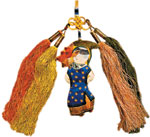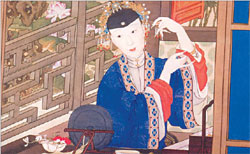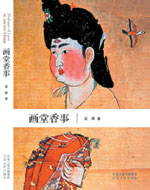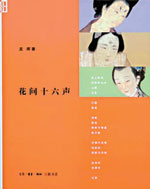Ancient spell of smell

 Treat your hair with olive oil before washing it to protect it, say modern beauticians. The ancient Chinese were doing the same thing centuries ago only they used tea oil.
Treat your hair with olive oil before washing it to protect it, say modern beauticians. The ancient Chinese were doing the same thing centuries ago only they used tea oil.
Likewise, lipsticks were very popular among fashionable women as far back as 1,000 years ago. Made of wax, the lipsticks were scented and during the Tang Dynasty (AD 618-907), up to 12 scents were used. Like the ones today, they were used to protect the delicate skin of the lips.
Ancient Chinese were well aware, and made frequent use, of cosmetics. This is brought out in two new books Huajian Shiliu Sheng (Sixteen Songs in the Flowers) and Huatang Xiangshi (Perfume of Love in Ancient China).
The author Meng Hui, an art history writer and editor of China's leading intellectual journal, Dushu, has picked lipsticks and scents to elaborate in these books.
A beautiful woman preens herself in front of the mirror in this art work painted during the Qing Dynasty (1644-1911). Ancient Chinese made frequent use of cosmetics. Courtesy of Meng Hui |
Huatang Xiangshi (Perfume of Love in Ancient China) covers incenses and Chinese-style perfumes, which were common household items in olden times. |
Lipsticks were also used by these performers as a love token. If they met anyone they liked, they would present the man with handkerchiefs carrying their red lip prints.
Incense craze
In Huatang Xiangshi Meng talks about incenses and Chinese-style perfumes, which were common household items in olden times.
"Nowadays, essential oils and incense candles are being imported into China, but a long time ago we already knew how to make our own incenses and perfumes," Meng said.
It was very common for people, especially those from noble families, to place incense burners in their houses and even near their beds.
People's liking for incense was much stronger than at present, Meng said. Before leaving the house, the noblemen would have their clothes infused with incense so that they could wear the sweet smell all day long.
It was also common for high-ranking families to invite friends over to appreciate some special kinds of incenses.
"This kind of party was just as popular as the karaoke parties of today," Meng said.
Huajian Shiliu Sheng (Sixteen Songs in the Flowers) covers common articles and objects of beauty, including lipsticks, combs and jewelries. |
Fashion-conscious women of the past would wear the nectars distilled from many kinds of flowers such as lily, lotus and chrysanthemum. Every morning they would spray a few drops of the nectars that would keep them smelling good the whole day.
Sexy brows
Meng's essays written in delicate language have aroused many readers' interest in ancient China's art and culture.
"More than the fashions themselves, it was the civilization, trade and superior skills behind these fashions that kindled my interest," Meng told China Daily.
Despite the books' popularity and potential impact, Meng said she remained motivated by the desire to know China's history.
Based on many Chinese classics including poems and books, as well as painting
Meng Hui, author of Huajian Shiliu Sheng (Sixteen Songs in the Flowers) and Huatang Xiangshi (Perfume of Love in Ancient China). |
Lipstick is only one of the 16 common articles and objects of beauty covered in Huajian Shiliu Sheng. Others included eyebrows, combs, jewelries, pillows and gauze dresses.
Talking about eyebrows, Meng said the sexiest part of a woman was thought to be the eyebrow.
"If a pretty woman could draw herself a couple of attractive eyebrows, she could win the whole world," she said.
The practice of shaving the eyebrows and painting new ones in place with black pigment also dates back to ancient times, she said.
"Nowadays, the concept of being sexy is totally different from olden times and is completely copied from Western ideas," said the writer.
"Hundreds of years ago, we had our own perfumes, but now we have to turn to Western products." It is time we created our own style based on China's unique culture and tastes, she added.
(China Daily 02/02/2007 page19)


















